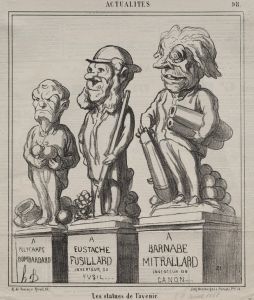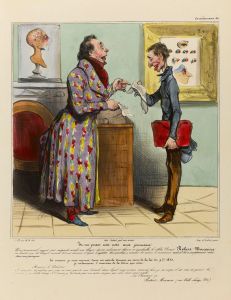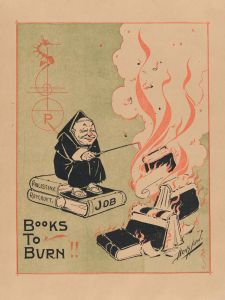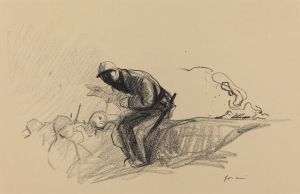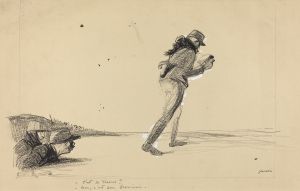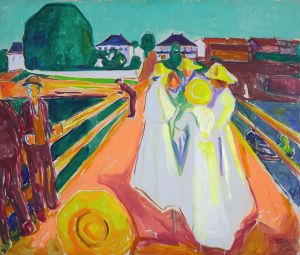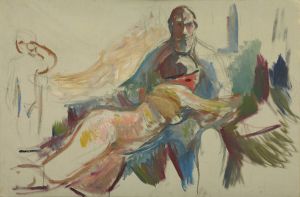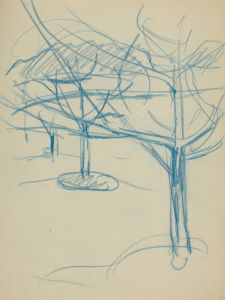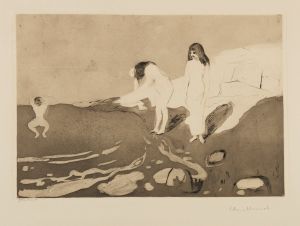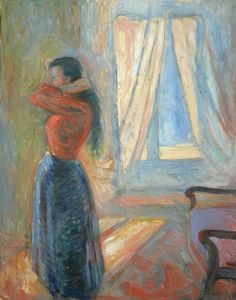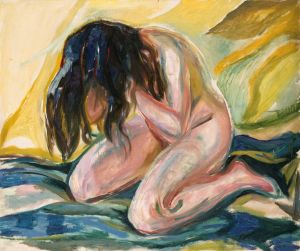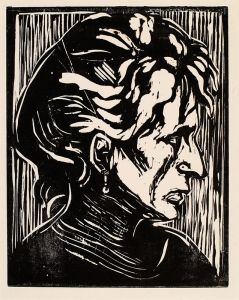
Caricature of the Press
A hand-painted replica of Edvard Munch’s masterpiece Caricature of the Press, meticulously crafted by professional artists to capture the true essence of the original. Each piece is created with museum-quality canvas and rare mineral pigments, carefully painted by experienced artists with delicate brushstrokes and rich, layered colors to perfectly recreate the texture of the original artwork. Unlike machine-printed reproductions, this hand-painted version brings the painting to life, infused with the artist’s emotions and skill in every stroke. Whether for personal collection or home decoration, it instantly elevates the artistic atmosphere of any space.
Edvard Munch, a Norwegian painter and printmaker, is renowned for his evocative and emotional works that explore themes of existentialism, love, fear, and death. One of his lesser-known works, "Caricature of the Press," reflects his complex relationship with the media and society. Although not as famous as his iconic painting "The Scream," this piece offers insight into Munch's perspective on the press and its influence.
"Caricature of the Press" was created during a period when Munch was experiencing significant public scrutiny and criticism. Throughout his career, Munch faced both acclaim and controversy, with the press often playing a pivotal role in shaping public perception of his work. This painting is believed to be a response to the media's portrayal of him and his art, capturing his disdain and skepticism towards journalists and critics.
The artwork itself is characterized by Munch's distinctive style, which often includes bold colors, dramatic lines, and expressive forms. In "Caricature of the Press," Munch employs these elements to convey a sense of chaos and distortion, perhaps reflecting his view of the press as a manipulative and distorting force. The figures in the painting are exaggerated and grotesque, a common technique in caricature that Munch uses to emphasize his critical stance.
Munch's relationship with the press was complicated. On one hand, media coverage helped to elevate his profile and bring attention to his work. On the other hand, he was often the subject of harsh criticism and personal attacks, which affected him deeply. This duality is evident in "Caricature of the Press," where Munch seems to grapple with the power and influence of the media, as well as its potential for harm.
The painting can also be seen as part of Munch's broader critique of modern society. Like many artists of his time, Munch was concerned with the rapid changes brought about by industrialization and modernization. The press, as a symbol of these changes, becomes a target for his critique. Through "Caricature of the Press," Munch not only comments on his personal experiences but also engages with larger societal issues, questioning the role of the media in shaping public consciousness.
While "Caricature of the Press" may not be as widely recognized as some of Munch's other works, it remains an important piece in understanding his artistic vision and social commentary. It reflects his ongoing exploration of the human condition and his willingness to confront uncomfortable truths about the world around him. As with much of Munch's oeuvre, this painting invites viewers to reflect on their own perceptions and the forces that shape them.
In summary, "Caricature of the Press" by Edvard Munch is a significant work that offers insight into the artist's views on the media and its impact on society. Through his distinctive style and critical perspective, Munch challenges viewers to consider the power of the press and its role in shaping public opinion.





